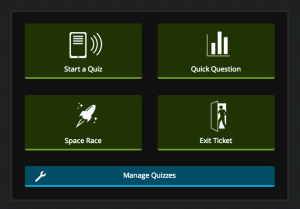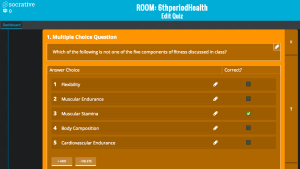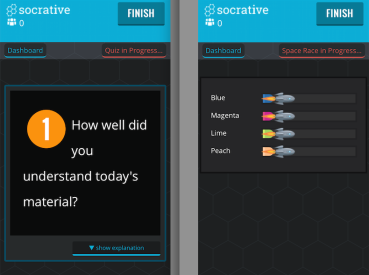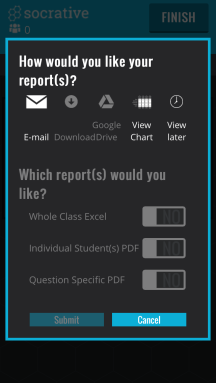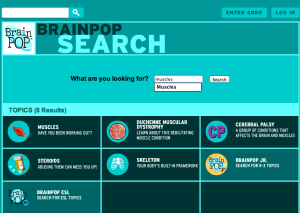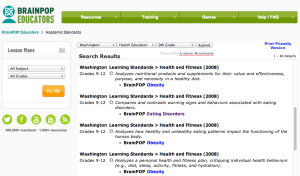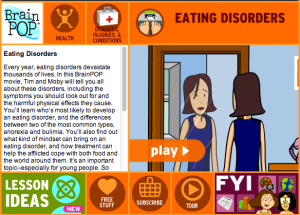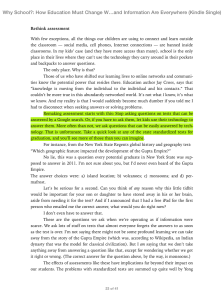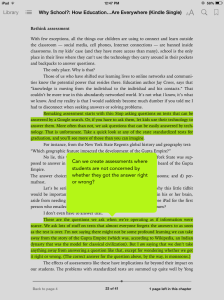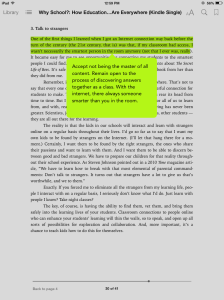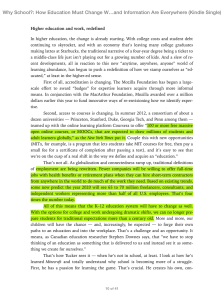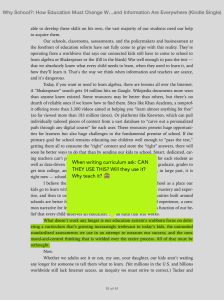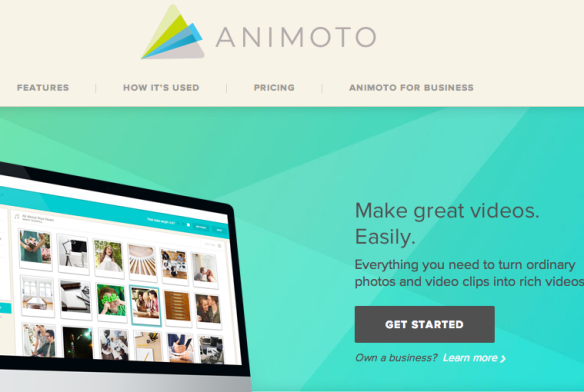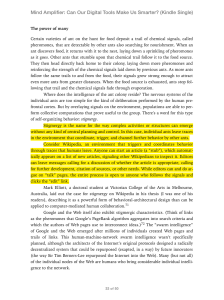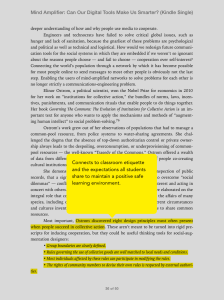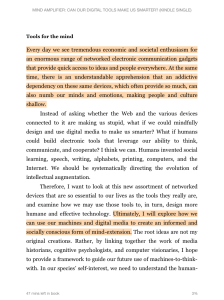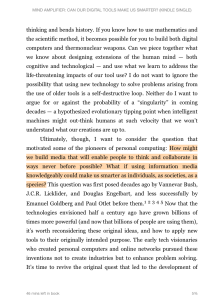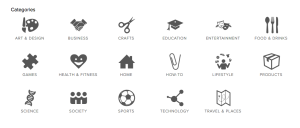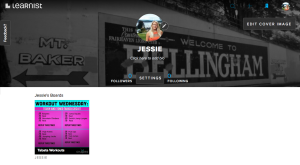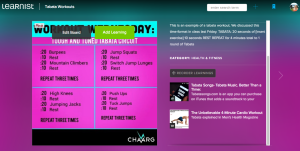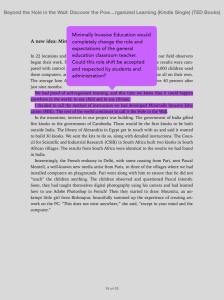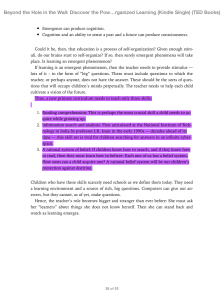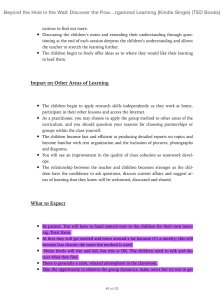As I finished Will Richardson’s Why School? this week, the concept that stood out to me the most was teachers being transparent learners. Richardson (2012) reflects back to his son’s academic history, analyzing how many of his teachers were truly transparent learners. Upon reflection, Richardson cannot recall many teachers that showed his son how to learn as opposed to what to learn. Image 1 highlights a note I bookmarked where I ask myself how I can design my professional development plan around being fluent in technology that still allows me to be transparent as a learner to my students. I believe this is all about balance. As a high school teacher in America, I feel it’s my responsibility to seek the training and resources I need to be fluent in digital tools or technological devices that are common among my students. This does not mean mastery, but a working knowledge. Remaining transparent as I continue to learn from my students about such resources or devices exhibits a healthy learning disposition that students will internalize.
(Image 1)
Being a transparent learner was an idea that made me a bit uncomfortable at first, since I have observed the traditional role of a teacher to deliver content. Transparency also means vulnerability. Being honest with your students that you are learning something for the first time is a vulnerable act that students will appreciate, not judge. I also think modeling my own learning behaviors can assist those struggling with methods of their own. For example, I often share with the class that I am a visual learner and need to see something written or displayed in front of me. I utilize this truth during lessons by organizing content on the board not only for myself but for other visual learners in the room. By sharing my own individual style of learning, I am attempting to introduce students to methods or perspectives of learning that may assist them in being more successful in the academic setting.
Using my device this week went smoothly, I feel confident in my skills when it comes to reading, scanning, bookmarking and highlighting. My next goal in using my iPad for texts or studying is to experiment using a pencil to highlight, circle or take notes of certain sections. Image 2 shows the pencil I am borrowing from a friend to continue extending my confidence using a tablet for academic purposes.
(Image 2)
Richardson, W. (2012). Why school? How education must change when learning and information are everywhere (TED Books) [Kindle]. Retrieved July, 2014.



